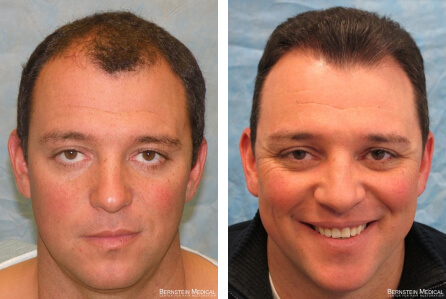
Bernstein Medical patient before (left) and after (right) hair transplant
We all know that hair loss is common among both men and women, and that hair transplant and hair restoration procedures are becoming more and more popular around the world. But what thoughts go through the head of your average hair loss sufferer before, during, and after a hair transplant?
The answer to that question may now be revealed. ABC News correspondent Cari Nierenberg and associate producer Ryan Stevenson take us directly into the mind and life of Bernstein Medical patient Adam Khoudja in a diary and feature on hair loss and hair restoration.
View each article at ABCNews.com:
You can also see the patient’s full before/after photoset in our Hair Transplant Photos gallery
Learn more about the hair transplant procedure and visit our own hair transplant photo journal.
Posted by





